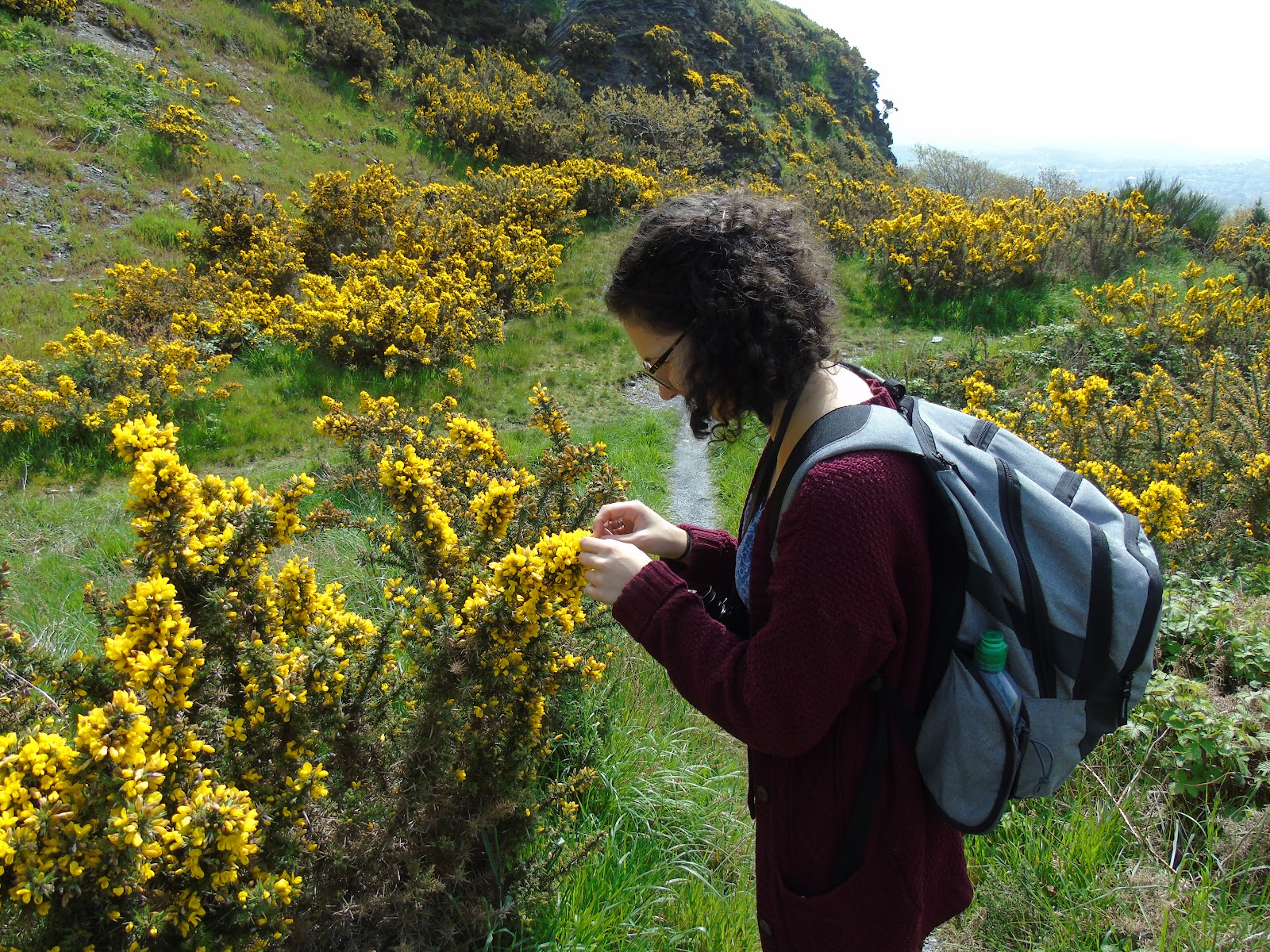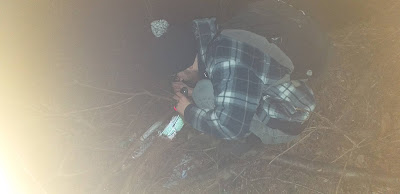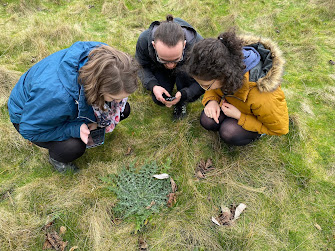Invertebrate surveys
Why bother?
Invertebrates are excellent indicators of ecosystem health and make up most of life on Earth (97%). In the UK, we have more than 32,000 terrestrial and freshwater and 7,000 marine invertebrate species. Many of these are declining or endangered.
Like the diversity of invertebrates, there are many survey techniques depending on the species you want to survey for (target taxa), habitats present, life stage, and whether you are proving presence/absence or calculating populations.
What shall I survey?
If I had the time I would survey everything but as much as I would love to, this just isn't achievable. So what are the main survey priorities?
An excellent starting point is looking at the habitats present as this can inform which groups we might find more of and suggest how invertebrates use the site. It is useful to map habitats and features first, then choose the survey methods to use. This includes habitat type (broad and/or specific), size, connectivity, substrate type, wetness, structure and quality. Key assemblages e.g. sand dune, oak woodland, upland flushes or functional guild e.g. saproxylic, pollinator, or aquatic species are an easy starting place. Some invertebrates are highly specialised so what may be assumed minor/unimportant features may be vital e.g., bare ground, grass tussocks, hoofprints.
 |
| Assemblages and corresponding sub-habitats (JNCC, 2008). |
Where to start?
Survey as many habitats as you can on your site - there will be invertebrates in almost all micro-habitats you find. This post focuses on terrestrial invertebrates but I hope to write an aquatic survey post soon (EMEC Ecology has a good summary of aquatic and terrestrial invertebrate surveys).
Mosaics (mixed habitats in one area) increase species diversity as one site might not supply all the features a species needs for completing their lifecycle. Conservation priority habitats are also important for rarer and endangered invertebrates. The lists below are recommended surveys by Buglife for these habitats:
- Brownfield (previously developed) land - extremely important for rarer species as there are mosaics of bare ground, flower-rich areas, heathland and wetland, e.g. colliery spoil heaps
- Bees, wasps, beetles, butterflies, moths, flies
- Plants
- Open Mosaic Habitat Assessment (Lush et al., 2013)
- Flower-rich grasslands - important especially for pollinators with many nectar and pollen resources
- Bees, wasps, beetles, grasshoppers, flies, crickets, butterflies, moths
- Worth noting which plants are being used (even if you take a photo of insects on flowers)
- Ponds and wetter areas - ponds, streams, ditches, wet woodland and damp flushes shouldn't be overlooked
- Aquatic invertebrates (mayflies, stoneflies, caddisflies), dragonflies, damselflies, water beetles, flies, moths
- Species may be in their juvenile stage when they are in aquatic habitats
- Scrub and hedgerow - can be a 'corridor' for invertebrates to link up habitats, provide shelter and nesting areas
- Beetles, flies, moths
- Woodlands - extremely important with a huge diversity of habitats (deadwood, mature and veteran trees, foliage, orchards, fungi, etc.)
- Beetles, flies, moths, butterflies
ANYONE can be an (invertebrate) surveyor!
If this is one of your first surveys, start with species which are recognisable or distinct to you. You will soon start learning which features to look out for and photos are always useful; a mobile phone camera is fine to start with. There are big communities of helpful people who can point you in the right direction or help with identifying your photos.
There are also many citizen science projects you can be involved with if you want some more structure: iRecord, UK Ladybird Survey, the Big Butterfly Count, BeeWalk, Big Pond Dip, Moth Night, Big Wasp Survey, and many more...
Right survey, right time, right species!
Surveys for invertebrates should be carried out from April to September, depending on weather and latitudes with 3-4 repeated visits (ideally separated by 4 weeks). A nice summary of survey timings is found on most consultancy websites (Ecology By Design). Surveys could use the timing as suggested by CIEEM (2020) but species-specific surveys can be required, e.g. winter egg searches for hairstreak butterflies. It is also useful to record weather and other environmental variables.
- Early to mid-spring flowering willows and blackthorn
- Late spring and early summer flowering flora like hawthorn
- Midsummer meadows in flower
- Late summer visit to coincide with bramble and ivy
- Autumn (September/ October) for wood decay species and fungi-feeders
How?
As different life-stages require different habitats or resources to be present, you need to survey across all habitats present using different methods, often with repeat visits. If your site is large it is wise to sub-sample each habitat. Below is a summary of several survey methods and habitats which you might use them in (Drake et al., 2007 details more about these methods):
 |
| Watching pond life |
Direct observations
The simplest way to survey is by watching insects ('direct observation'). This is often how we observe dragonflies, damselflies and butterflies as well as other active and conspicuous species when we visit a site. Often birders watch dragonflies with their binoculars when out looking for birds or you can watch pond life (but please be careful and make sure you aren't alone if you are near water).
Grubbing
This definitely needs you to get stuck in! Grubbing is useful in habitats like wetlands, shingle, dead wood, short vegetation, bare ground and beneath stones. You will find small beetles, bugs, myriapods, snails and many other gems.
For more adventurous surveyors, grubbing in the dark is particularly fun for finding nocturnal beetles and springtails. It is very important to make sure you are in a safe area and not out by yourself. Even less glamourous is searching in carrion and excrement. This will yield lots of interesting beetles and flies, but you must keep any germs away from food, your face and others. Ideally lab gloves can be used here but it may be worth speaking to someone or emailing me if you want advice on safe protocol for this.
 |
| Searching in gorse for insects |
 |
| Grubbing for nocturnal beetles in dead wood |
Netting
 |
| Net inspection |
Netting is a common way to catch different types of invertebrates in all manner of habitats. These can be used to catch unsuspecting individuals in the air (lighter aerial/butterfly net) or in tall vegetation (sweep nets). These methods will catch lots of invertebrates in a very short time.
Sweep netting standard methods use a figure-of-8 pattern through vegetation. Spot-netting works well on flowers or leaves in the sun as insects often gather there.
To prevent net damage try to avoid using these near thorny and woody plants.
The light colour/holes of the netting mean that the insects move towards the light. You can seal the net by flipping the bag over or be a slightly dodgy-looking entomologist with a big net over your head. It is helpful to have a pooter to hand for anything that is exciting.
 |
| Spot-netting bees and other pollinators in a wildflower meadow |
Aquatic nets
 |
| D-net and sorting samples |
Most aquatic invertebrate surveys in flowing water require kick-sampling. This requires you to disturb the river sediments by dragging your heel through them and catch the invertebrates using a sturdier D-shaped net downstream of where you are kicking. Once you have caught the sediment, a white tray is used to sort the invertebrates and separate any vegetation out. Netting should not be done in <80 cm deep running water. You will find a sample mostly collects molluscs, beetles, bugs.
Basic pond-netting is also effective for standing water or pond surveys to see what is there (but not for soft sediments).
 |
| Examples of river catches from Shropshire Hills AONB |
Beating
As implied, beating is used to dislodge invertebrates from woody vegetation. Any dislodged individuals are caught on a large tray and collected with a pooter or identified before they escape. This is especially effective for saproxylic/epiphytic species, including beetles, bugs, caterpillars, barkflies, lacewings, and spiders. This method is better when weather has been dry and done gently so not to damage the vegetation or disturb bird nests.
You can get an expensive beating tray which can be a bit clunky to carry around, but a big white sheet, white upturned umbrella or a light-coloured plastic tray work equally well with a walking stick or fallen branch (for a fraction of the price).
Other surveying methods
The above methods work well for a basic survey to see the kinds of species present. The next few survey methods can help overcome issues with weather or variation in environmental factors.
 |
| Suction sampling |
Suction sampling
Suction sampling involves using a reverse leaf blower to suck ground material and invertebrates into a collecting bag. Most of the invertebrates collected tend to be small plant and leaf hoppers, parasitoid wasps, flies, and spiders with other ground-dwelling invertebrates also being hoovered up.
Light traps
Most often these are used to survey moths and moth trap intruders can occur, with insects like caddisflies and cockchafer beetles being common finds. There are several types of these light traps, with actinic or UV bulbs both being effective in different habitats but a white sheet/wall lit up can also be effective. Egg boxes are very useful to line the bottom of moth traps with but be careful to check for any insect eggs laid when emptying your trap the next morning.
Make sure to not do these traps on consecutive nights to allow moths and other insects to carry out their normal behaviour and lifecycle. It is also worth checking around the trap for any moths that are sat just outside to record these species too.
 |
| White sheet moth trap in Bornean rainforest |
 |
| UK moths from a Skinner trap: Brimstone Moth, Elephant Hawkmoth, and Mother-of-Pearl Moth |
Baited traps
Another method of attracting moths (and butterflies) is to paint sugar water or wine syrup onto a fence as they will be attracted by the sugar. This is best for day flying species and the light traps for nocturnal species.
More targeted species can be found using pheromone traps or specific food resources, such as carrion for burying beetles. This might be useful to test for presence of less easily surveyed species including clearwing and emperor moths.
Leaf litter
Leaf litter collected, or litter from a suction samples can be sieved to sort invertebrates from the sediments and vegetation. For more intensive surveys, Tulgren funnels can be used which heat sediment samples via a light bulb causing the invertebrates to collect at the bottom.
Pitfall traps
These are simple traps to make with steep sides sunk into a similarly sized hole, until flush at ground level. These are very effective at surveying active ground dwelling invertebrates especially beetles, spiders, and other ground arthropods. Invertebrates may either fall in or be attracted by the dark and moist environment within. It is worth mapping or making a note of where you put the traps so you can recover them easily.
It is recommended to put a cover just above ground level covering the trap to prevent rain flooding it, small mammals or reptiles falling in, and birds or other predators taking advantage of the 'fast food' feast in the trap. Ground beetles are prolific hunters and are common finds in pitfall traps, so traps should be checked regularly to prevent your invertebrate catch being eaten and becoming one rather large and well-fed beetle!
Pan traps
 |
| Yellow Pan Trap |
Malaise traps
A fine netting tent-like flight-interception trap with a central screen that leads to insects being collected in a sample tube at the top. Flying insects hit the screen then move upwards and along the roof to the sample tube. Walls at either end of the screen reduce the number of insects escaping sideways. |
| Malaise Trap |
Flight-interception traps
Other flight interception traps have a sheet of glass, transparent plastic or fine black netting fixed vertically over a collecting vessel. The orientation of the window should be across any obvious flight lines, for example, along hedgerows or woodland rides. These tend to catch lots of beetles and a reasonable range of other groups. Small versions are used for emerging insects in rot-holes and fungi on dead wood.
Equipment checklist
Some useful equipment to take is:
- Camera, ideally with GPS (or a separate GPS unit), either a phone or digital camera is fine
- Notebook and pencil (if it's wet pen will run)
- Clothing - waders, hi-vis, gloves, warm and cold weather clothing, life jacket (for aquatic surveys)
- Shoes - wellies, walking boots, or other suitable shoes
- Nets, pooter, and pots for collecting insects and a hand lens
- Binoculars
Useful information:
Natural England (2014). Invertebrate Standard Advice for Essex.
Buglife Good Practice Planning for Invertebrates Resource Hub.




.JPG)
Comments
Post a Comment